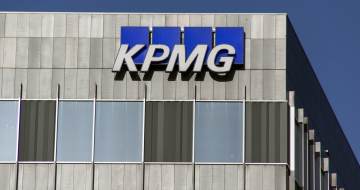

KPMG has opened its annual flexible benefits enrolment window for the coming year and is encouraging employees to actively make selections for their 2017 coverage.
The three-week window allows employees to choose from a menu that benefits best suit them, including medical, dental, insurance, short-term and long-term disability, as well as health pledges they can make for 2017.
“Every year, you have to go in and restate you’re going to eat healthy, you’re going to exercise, you’re not going to smoke . . . those kinds of things,” says Linda Speedy, chief human resources officer at KPMG in Canada. “And when you make those pledges, it gives you some credits that help to fund your benefits selection.”
Read: St. Joseph’s Healthcare Hamilton wins health and wellness award
Employees who don’t actively make their selections go into last year’s benefits plan but they won’t be able to use the flexible credits, Speedy notes.
KPMG is communicating the benefits enrolment period in a variety of ways during the three-week window. The first communications, in the first week of November, was on the organization’s internal online news source. It also sent a targeted email to all employees on the first day the enrolment window was open.
“You get your targeted email that directs you to support so you can calculate costs or different programs,” says Speedy. “And then throughout the benefits enrolment period, you get regular emails about enrolment being open. . . . Those emails are targeting people who have not gone in.”
Employees who are on leave or have retired will receive information at their home address. The 2017 benefits plans take effect on Jan. 1.
Read: Rogers wins benefits communication award by practising what it preaches
Outside of the annual benefits enrolment, KPMG is undertaking a full review of its rewards approach, including its benefits and its wellness effort. “Right now, we have some programs that we would call, loosely, under our umbrella of wellness: our fitness reimbursement, for example. Over the last number of years, that’s gotten a lot broader,” says Speedy, noting that while it was specifically for joining a gym, it now involves a much broader definition that includes support for buying fitness equipment and taking fitness classes.
“So now we’re going to look at revisiting our entire suite of programs and asking, ‘What makes sense now?’” she says. “In particular, I think we’ll start to look more at wellness-type options. So more of a wellness approach rather than typical, traditional benefits.”
The review follows employee feedback through surveys asking what’s important to them.
“We’ve had a number of different surveys with our people around what’s important to them and see an opportunity to respond and better align our whole approach to wellness in response to what they said,” says Speedy.
Read: Federal government invests in Montreal-area workplace wellness project
